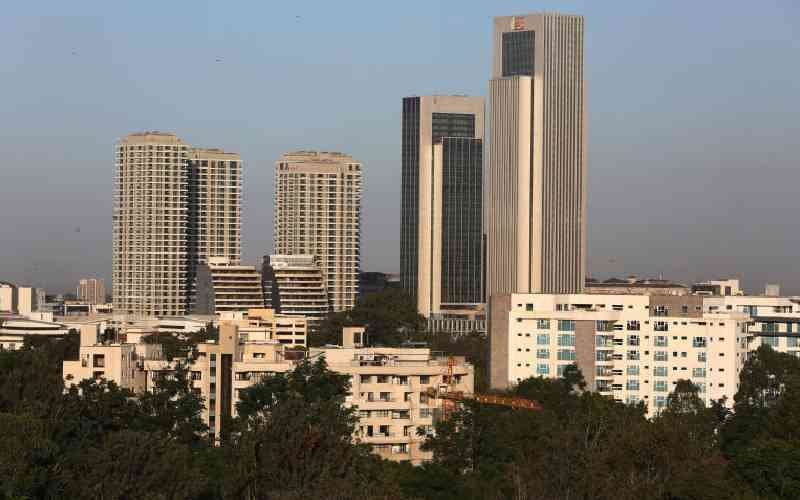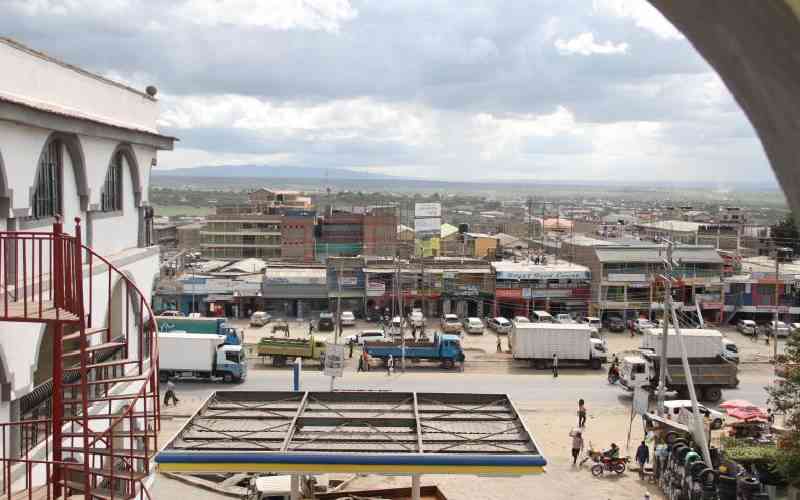
Vivian Wanjira knew she had struck the jackpot the day she finally moved out of her rental house in Ruaka and settled in her new three-bedroom bungalow in Ruiru.
It was in 2018 and land was, by her standards, affordable, she says. Her husband Thomas, who frequented Nairobi's central business district (CBD), would after the move had to cover more distance. However, the money they were saving on rent was comforting.
"Suddenly there was more space for the children, it was quiet, and we now owned a home - neither too near the city nor too far," Ms Wanjira says. To the family, it was the ideal location, the dream home.
Almost immediately after, a mass exodus from houses around the city's suburbs began. People started buying land en masse in secondary nodes, and satellite towns that surround Nairobi.
This trend was exacerbated by the Covid-19 pandemic as many jobs embraced remote working and workers ditched rent-paying to own homes, or sought cheaper rentals altogether.
This demand for land and housing in secondary towns triggered a hike in property prices and for those late to enter the party, there was little to celebrate.
HassConsult Land Price Index for the third quarter of 2022 shows that Ruaka's price of land for an acre now stands at Sh96 million, beating Lang'ata, Karen, Ridgeways and Donholm, all suburbs which are generally expected to fetch higher prices.
The annual percentage changes of land in these satellite towns are immense - a 20.1 per cent increase for Syokimau and over 10 per cent in eight of the 14 towns.
"Juja has benefitted from road infrastructure and investors getting drawn to develop housing and affiliated property for higher education centres located in the area," said HassConsult.
"Syokimau town is now more accessible following the opening of the Nairobi Expressway. The town was the best performer over the quarter with prices increasing by 6.8 per cent. Syokimau was also the best performing town annually."
House prices in Ngong increased by 18.3 per cent annually, the biggest increase in the pricing of such units in the suburbs and the satellite towns.
This phenomenon of land pricing is founded on studies of land economics dating back many centuries ago, albeit at a time most of the land was used for agricultural practices.

David Ricardo, a 19th-century economist discovered that aristocrats owned huge chunks of land. At a time of great war when thousands of soldiers were fed on wheat products, sections of the land that were used to cultivate wheat were very expensive. Peasants rented such land, for which they paid top dollar, and grew wheat on it. They priced the wheat expensively so they could recoup their money.
Ricardo defined rent as the payment for the original and indestructible powers of the soil. A niggardliness of nature, which caused scarcity of land, meant that land was expensive only when whatever was produced on such land was in high demand - the richest land (agriculturally) would command a higher rent. This is called derived demand.
Johann Heinrich Von Thunen, also of the 19th century, explored the relationship between the primary town, like Nairobi, and the surrounding land.
In what he called a punctiform market occupying a point in the land space, analogous to a central place, concentric agricultural zones formed.
The point was in the middle of a plain of featureless terrain on which travel was equally possible in all directions, called a unitropic plain.
With all surpluses sold in the market, and transportation costs assumed to be equal per unit distance travelled in all directions, every farmer wanted to be as close to the market as they could.
That made land nearest to the market very expensive. Those who grew perishable goods - or bulky or brittle products - were willing to outbid everyone else for land nearest the market.
Paying higher rents, they were also likely to price their products higher. Farmers with the highest financial surpluses from their agricultural enterprises could afford to bid the highest for the land with the minimum transportation costs.
In today's world, this could best explain why an office block just off the city centre will be costlier than one some 40 or so kilometres away. Higher investment in the small, expensive space near the city centre, which promises more customers and higher returns for the developer, means perennially increasing property prices.
"Each farmer would be rational in his economic operations and would aim at maximising profits and minimising losses, or production pains. In so doing, he would be flexible in the type of crop he produces. This means he could change his production methods and his crops on instantaneous notice depending on the conditions of the commodity market in this punctiform market centre," writes George King'oriah in his book Introduction to Land Economics.
The closer to the town one is, the higher the rent, with a curve that graphs the net income earned by any farmer of any individual crop located at any distance from the market as a function of distance- called the rent bid function, showing a drop in income for farmers further from the city.
The same is true of property owners today. Even as property prices in the satellite towns increase, they often will not match those of the city's suburbs.
As such, surrounding the market, in that order, were horticulture and dairy, lumber products, wheat, barley and rye, ranching, marginal land, and desert surrounding this theoretically isolated state.
In the most potent theories of city structure, around the CBD, which are areas of highest development activity characterised by skyscrapers that maximise the little available, yet expensive, space, are low manufacturing, low-class residential and then, further outward, high-class residential areas (in the multiple nuclei and concentric zone theories).

Economist William Alonso, in the economic substitution theory, postulated that households locate their residences in relation to the city centre based on their fixed income, accessibility preferences, space preferences and a desire to consume other goods and services.
He showed that lower-income households tend to locate their residences in the central locations of urban areas with upper-income households in the peripheral areas. "This happens because the rich can afford to buy more land than the poor in the social system, where land is sold in plots of specifically large areas in hectares," said Alonso.
"In addition, the upper-income groups are able to afford the transport from the urban fringes to the central business district every day, because this is where their workplaces are assumed to be situated."
But Alonso also showed that as income rises within the high-income bracket, the optimal location of their residential areas does not necessarily move away from the centre continuously.
"In fact, at a certain income level, the distance from the city centre and the accompanying spatial amenity at the peripheral areas become some kind of inferior good. This implies that the very high income tends to reverse the direction of their trend of residential location and to move towards the city centres. This is because, at these income levels, these residents can afford to purchase large parcels of land even relatively near the city centres for amenity purposes and for their convenience. By doing so, they can eliminate costs altogether," he said.
As such, even as "better class residences" are located far away from the city centre at the start, the sprawling space between these homes and the city centre is quickly closed by the affluent.
The rents thus catch up with those who drifted away into satellite towns seeking cheaper and better quality properties.
In the end, the poor get more and more squeezed in shacks, eyesores that huddle around the residences of the wealthy as the wealthy buy all land around them. The metropolis keeps growing outwards and prices of property get increasingly out of reach of middle-income earners, and below.
If Ms Wanjira were to buy the same plot of land she bought five years ago today, she would incur costs way higher than she did. Her new neighbours have bought at about twice the price she did. What she would not afford at all is a return to the same house she rented in Ruaka.
 The Standard Group Plc is a multi-media organization with investments in media platforms spanning newspaper print
operations, television, radio broadcasting, digital and online services. The Standard Group is recognized as a
leading multi-media house in Kenya with a key influence in matters of national and international interest.
The Standard Group Plc is a multi-media organization with investments in media platforms spanning newspaper print
operations, television, radio broadcasting, digital and online services. The Standard Group is recognized as a
leading multi-media house in Kenya with a key influence in matters of national and international interest.











